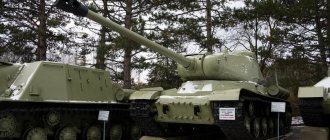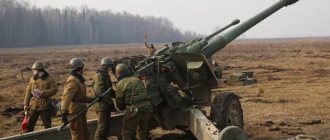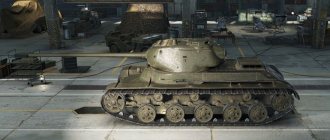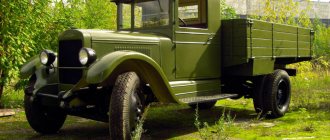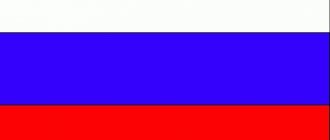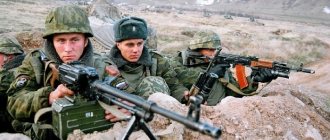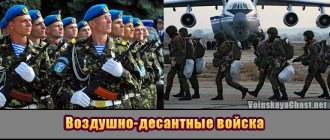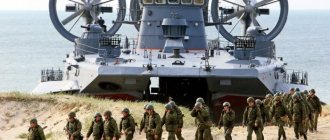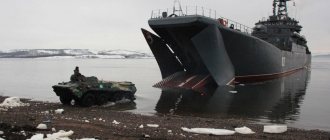In our time, it is a little stupid to try to divide military branches into prestigious and non-prestigious. Each branch of the military plays its own irreplaceable role on the battlefield - you can’t argue with that, alas. For example, without landing troops it is quite difficult to effectively conduct a battle behind enemy lines, and without heavy armored vehicles it is difficult to imagine an effective breakthrough of positional defenses.
But still, some types of troops are considered elite, while others are not. Let's consider service in tank forces, how you can become a tank driver. By the way, tank troops are located exactly in the middle of the hierarchy of military branches. But being a tank driver is hard work.
Russian Tank Forces
Tank troops form the “core” of ground forces, interacting with motorized rifle troops, both in defense and in the offensive. Without infantry support, the use of tanks is ineffective.
The following tasks are solved using tanks:
- in defense - fire support for defending motorized rifles, launching counterstrikes and counterattacks in order to suppress enemy activity;
- in the offensive - breaking through enemy fortifications, wedging into defensive formations to a great depth, dissecting and encircling individual groups for the purpose of destruction.
For this use:
- tank divisions:
- tank brigades;
- tank regiments as part of motorized rifle divisions;
- tank battalions of motorized rifle regiments and brigades.
Control of tank forces
In the modern Russian army, tank forces are not considered as a separate branch of the military and do not have centralized control. Issues related to armored vehicles in the Russian armed forces are dealt with by the Main Armored Directorate of the RF Ministry of Defense, which is headed by Major General S.V. Bibik.
Unlike military branches, tank crews do not have their own headquarters and do not plan independent combat operations. Management tasks are reduced to:
- improvement and modernization of armored vehicles;
- military-technical cooperation with foreign states;
- planning and material support of armored units, maintaining the existing fleet of vehicles.
That is, the main functions are administrative and economic.
RESPONSIBILITIES AND PLACEMENT OF CREW PERSONNEL
Chapter two
RESPONSIBILITIES OF CREW PERSONNEL
Commander of a tank (armored car, armored personnel carrier)
39. The tank commander reports directly to the platoon commander. He is the commander of the tank crew and is in all respects responsible for the tank, its weapons and crew. The tank commander appoints his permanent deputy from the crew.
The tank commander is obliged to:
- maintain strict military discipline in the tank crew and require accurate knowledge and strict performance of their duties by the crew;
- know a tank, be able to shoot tank weapons and use a radio station;
- always have with you a map or diagram of the area of operation of your unit; - take care of maintaining the tank in full and constant combat readiness;
- Before each tank exit, check: the serviceability of the tank, weapons, sighting devices, recoil devices and special communication and surveillance devices; provision of the tank with ammunition, fuels and lubricants, food and water; combat configuration of the tank;
- maintain in good repair and ensure the completeness of the required tank and entrenching tools, camouflage equipment, chemical protection equipment and spare parts;
- monitor the constant serviceability of fire extinguishers;
- supervise the crew during military tank repairs;
- maintain a tank log.
40. On the march, the tank commander is obliged to:
- before the performance, study the route, its features and the most difficult sections of the route;
- explain to the driver the nature of the upcoming route;
- organize continuous ground surveillance and, at the direction of the platoon commander, air surveillance;
- maintain march discipline;
- control the work of the driver (change of speed, distance, change of direction); at rest stops, indicate to him the features of the upcoming section of the route;
- receive and execute signals and commands given by the platoon commander and traffic controllers;
- observe masking measures;
- at rest stops, report to the platoon commander about the condition of the tank (oil pressure, temperature, availability of fuel and lubricants, etc.);
- in the event of an accident, report to the platoon commander and take measures to quickly eliminate the malfunction.
41. Before the battle, the tank commander is obliged to:
- understand the given task;
- study the battlefield, direction and objects of action;
- identify areas that are dangerous in anti-tank terms and ways to overcome or bypass them;
- draw up a tank card, mark targets on it and determine how to destroy them;
- assign the crew a combat mission on the ground, distribute observation sectors among the crew members; on local subjects, indicate the direction of attack of the platoon, the axis of combat nutrition, restoration and communications of the battalion (company);
- ensure that your tank is brought into combat readiness in a timely manner: check the availability of ammunition, fuel and lubricants, food, water and take measures to replenish them;
- position the tank at the initial position in accordance with the received task and camouflage it from air and ground surveillance;
- establish surveillance of the platoon commander's signals;
- check the crew’s knowledge of the special signals established for communication with the squadron commander and with other branches of the military.
42. In battle, the tank commander is obliged to:
- complete the assigned task; maintain your place in the battle order;
- apply to the terrain, using coverings for firing and maneuvering;
- continuously monitor the battlefield, search for targets and destroy them with fire;
- monitor the accurate execution of signals and commands by the crew;
- observe the actions of neighboring tanks, especially the platoon commander’s tank, its signals and signs;
- maintain continuous communication with the platoon commander;
- if toxic substances are detected, order the tank crew to put on gas masks;
- keep records of ammunition consumption, report to the platoon commander about the consumption of half and three-quarters of the ammunition;
- in the event of failure of other tanks in the platoon, join another platoon of the company and continue the battle;
- during a forced stop, having organized fire cover, take measures to restore the tank and reported this to the platoon commander;
- if it is impossible to remove the emergency tank from the battlefield by the crew, resort to the help of infantry or other tanks;
- if there is a threat of the tank being captured by the enemy, fire to the last cartridge and only if it is completely impossible to save the tank, remove the crew with machine guns from it and render the tank along with the gun completely unusable.
43. After the battle (march), the tank commander is obliged to:
- position and camouflage the tank as directed by the platoon commander;
- bring the tank into full combat readiness; in case of contamination of a tank with persistent toxic substances (PTS), decontaminate it;
- report to the platoon commander about the actions of his tank in battle, about the condition of the crew and tank personnel.
Turret commander (loader)
44. The turret commander reports to the tank commander and is responsible for the condition and. constant combat readiness of all tank weapons. He is obliged:
- know tank weapons (guns, machine guns, observation and fire control devices, ammunition, fighting compartment equipment, tools and spare parts for weapons) and keep them in full working order;
- be able to shoot from tank weapons and systematically check the condition of sighting devices, recoil devices and guidance mechanisms;
- always know the amount of ammunition available; be able to prepare and arrange them; keep records of spent ammunition, replenish their stock whenever possible; take measures to preserve spent cartridges and return them in a timely manner;
- immediately correct weapon malfunctions, reporting this to the tank commander;
- keep the tank's fighting compartment clean and tidy;
- Maintain a tank weapons register.
The turret commander leaves the tank only with the permission of the tank commander.
45. On the march, the tower commander is obliged to:
- conduct observation in your sector, reporting to the tank commander about everything noticed, primarily about the appearance of enemy tanks and aircraft;
- camouflage the tank at rest stops as directed by the tank commander;
- help the driver fix malfunctions in the material part of the tank.
46. Before the battle, the tower commander is obliged to:
- prepare data for shooting;
- check the serviceability of weapons and surveillance devices;
- replenish the tank with ammunition and check the stowage of magazines and shells;
- study the special signals established for communication with the platoon commander and with other branches of the military.
47. In battle, the tower commander is obliged to:
- continuously monitor the battlefield and the platoon commander’s tank; report to the tank commander about newly discovered targets and signals from the platoon commander;
- load weapons in accordance with the commands of the tank commander; fire (in a heavy tank);
- keep records of the consumption of shells and cartridges, reporting to the tank commander about the consumption of one quarter, half and three quarters of the ammunition.
48. After the battle, the tower commander is obliged to:
- put your weapons in order; check the serviceability of the turret rotating mechanisms;
- take into account the remaining ammunition and report to the tank commander;
- collect and return spent cartridges;
- replenish ammunition to normal.
Senior driver mechanic
49. The senior driver-mechanic reports to the tank commander. He is responsible for the tank's full readiness for movement and directly controls it. The senior driver mechanic is obliged to:
- have excellent knowledge of the material parts of the tank and be able to drive it in various conditions;
- keep the tank and all its components clean, in full working order and always ready to move, operate the tank correctly at different times of the year;
- maintain the required set of tools and spare parts for the tank;
- promptly refill the tank with fuels, lubricants and water;
- keep records of the consumption of fuels, lubricants and spare parts;
- promptly inspect tank mechanisms in order to prevent breakdowns and malfunctions; detect any malfunctions immediately and report them to the tank commander;
- personally participate in military tank repairs;
- keep records of engine operation.
The senior driver leaves the tank only with the permission of the tank commander.
50. On the march, the senior driver mechanic is obliged to:
- study the route;
- drive the tank in accordance with the terrain conditions;
- follow traffic rules;
- monitor the operation of the engine, chassis and control devices;
- receive signals and commands from the tank commander and from the tank in front; report to the tank commander about received signals;
- at rest stops, inspect the chassis and check the presence of fuel, oil and water temperature; report the inspection results to the tank commander;
- immediately eliminate any detected faults,
51. Before a fight, the senior driver mechanic is obliged to:
- study the mission and direction of the platoon’s actions; determine what obstacles may be encountered and how to overcome them;
- make sure the tank is in good condition;
- whenever possible, refill the tank with water and fuels and lubricants, regardless of the amount consumed;
- study the signals established for communication with the platoon commander and with other branches of the military.
52. In combat, the senior driver mechanic is obliged to:
- drive the tank in the indicated direction, maintaining distances and intervals, adapting to the terrain and providing the best conditions for firing from the tank on the move;
- observe the terrain ahead; report to the tank commander about what was noticed on the battlefield and the results of tank fire;
- avoid obstacles on the path of movement that are impassable for a tank, without losing sight of neighboring tanks and maintaining your direction;
- If a tank malfunctions or is damaged on the battlefield, immediately begin repairing it yourself.
53. After the battle, the senior mechanic driver is obliged to:
- check the condition of the tank’s equipment and the availability of fuel and lubricants, report to the tank commander and take measures to immediately refuel the tank;
- quickly bring the material part of the tank to full combat readiness.
Driver mechanic junior
54. The junior driver-mechanic reports to the tank commander. He is obliged:
- know the material part of the tank, be able to drive the tank and assist the senior driver in caring for the tank;
- fill the tank with fuels, lubricants and water;
- maintain the tank chassis in constant cleanliness and order;
- know the structure of a machine gun and cannon, be able to shoot from them.
The junior driver leaves the tank only with the permission of the tank commander.
55. On the march, the junior driver must:
- conduct observation in your sector, reporting to the tank commander about everything noticed;
- monitor engine operation;
- at rest stops, camouflage the tank and assist the senior driver in inspecting the material part of the tank and troubleshooting; refuel the tank with fuels, lubricants and water.
56. Before a fight, the junior driver must:
- assist the senior driver in inspecting and preparing the tank’s equipment for battle; refuel the tank with fuels, lubricants and water;
- assist the turret commander in replenishing the tank with ammunition; prepare ammunition for loading;
- study the special signals established for communication with the platoon commander and with other branches of the military.
57. In combat, the junior driver-mechanic is obliged to:
- observe the battlefield in the sector indicated to him and report to the tank commander about everything noticed;
- perform the duties of a loader;
- if necessary, fire from a machine gun.
58. After the battle, the junior driver must:
- provide assistance to the senior driver mechanic in inspecting and troubleshooting the material part of the tank; refuel the tank with fuels, lubricants and water;
- assist the turret commander in handing over spent cartridges and replenishing the tank with ammunition.
Radio operator-machine gunner
59. The radio operator-machine gunner reports to the tank commander. He is obliged:
- know the structure of the radio station and internal communication devices of the tank; keep them in constant readiness for work;
- keep the required tools and spare parts of radio equipment and communication devices in order and in good working order;
- know the communication circuit and radio data necessary for operation; be able to quickly establish radio communications;
- know communication signals with other branches of the military;
- know a machine gun and be able to shoot from it; keep the machine gun in constant combat readiness;
- report to the tank commander on the condition of the radio station and internal communication devices of the tank.
The radio operator-machine gunner leaves the tank only with the permission of the tank commander and after transferring duty at the radio station to a person from the crew indicated by the tank commander.
60. On the march, the radio operator-machine gunner is obliged to:
- keep the radio station constantly working “on reception”; continuously watch her with headphones on;
- report received signals and commands to the tank commander;
- proceed to work “in gear” only with the permission of the tank commander;
- on the orders of the tank commander, send signals by radio;
- monitor the operation of the internal communication and quickly correct its damage;
- conduct observation in your sector indicated by the tank commander.
61. Before the battle, the radio operator-machine gunner is obliged to:
- check the readiness of the radio station and intercom devices;
- study the radio communication diagram;
- study communication signals with artillery and other branches of the military; have a table of signals with you at all times;
- receive missiles and arrange them in order of release along the lines.
62. In battle, the radio operator-machine gunner is obliged to:
- continuously be on duty at the radio station with headphones on; maintain communication with radio stations according to the radio communication scheme;
- transmit reports and orders according to the instructions of the tank commander, report to the tank commander about all orders and reports received;
- give signals upon the orders of the tank commander that the lines have been reached;
- observe the battlefield in the sector indicated to him;
- be constantly ready to open fire from your machine gun.
63. After the battle, the radio operator-machine gunner must:
- check the condition of the radio station and eliminate any detected faults;
- tidy up the machine gun;
- be on duty at the radio station, maintaining communication in accordance with the radio communication diagram.
CREW ACCOMMODATION
64. The crew of a heavy tank consists of four people and fits (Fig. 1):
- tank commander (CT) - in the commander's cupola behind the turret commander;
Rice. 1. Accommodation of the crew in a heavy tank. Formation near the tank.
- senior driver mechanic (MB) - in the management department;
- junior driver mechanic (M) (loader) - in the turret, on the seat to the right of the gun;
- turret commander (KB) - in the turret, on the seat to the left of the gun, near the aiming devices.
65. The crew of a medium tank of the T-34 type consists of four people and fits (Fig. 2):
- tank commander (CT) - in the turret, on the seat to the left of the gun, near the aiming devices;
- driver mechanic (MB) - in the management department;
- turret commander (KB) (loader) - in the turret, on the seat to the right of the gun;
- radio operator-machine gunner (RP) - in the control department, to the right of the driver.
Fig.2. Placement of the crew in a medium tank of the T-34 type and formation near the tank.
Fig.3. Placement of the crew in a light armored car BA-64 and formation near the armored car.
66. The crew of a light armored car of the BA-64 type consists of two people and fits (Fig. 3):
- vehicle commander (CM) - in the turret, at the machine gun;
- driver (B) - in the control department.
<< Back - Forward >>
| < Back | Next > |
How to become a tanker?
You can become a tanker while serving in conscription. This is one of the few branches of the military (now absent) that recruits conscripts. The requirements for future tankers have one feature. If tall height and physical strength are valued in the landing force or marine corps, then tankers are not tall people. Just like the sailors of the submarine fleet, tank crews are forced to be in the cramped conditions of a combat vehicle, the internal space of which is not designed for accelerators. Therefore, the maximum height of conscripts applying to become a tank driver is 175 cm. Short stature does not mean that the candidate must have a slight physique. On the contrary, preference is given to stocky, physically developed conscripts who can withstand heavy physical exertion. Fitness category A or B1.
The vast majority of tankers are contract soldiers. This is explained simply. A tank is an extremely complex and high-tech machine, the study of its features requires a long time. With a service life of 1 year, training conscripts who will not be able to consolidate their skills in practice is not cost-effective.
How to get into tank forces?
In order to get into the tank forces, you need to be mentally prepared for difficulties. Requires physical training. You need to prepare yourself for the fact that you will have to carry weights. With great growth, you will have to forget about tank troops, since a person simply cannot fit in a tank. Suitable height is from 150 to 175 centimeters. You also need to have excellent eyesight and good hearing.
Of course, the candidate can be assigned to tank forces, but it is better to inform the draft commission about your desire. They will make an appropriate note and will most likely take into account the young man’s wishes. You also need to understand that restrictions on the TV service are mostly related to physical parameters. Height should be no more than 175 centimeters.
For military service
There are a large number of military branches, but the decision is made by the medical commission and the military commissariat. If there is a difference for a person where to serve, then it is better to come to the military registration and enlistment office before the start of conscription. Employees usually understand the desire to serve in certain troops. The only thing they pay attention to is health and physical indicators.
Contract service
Candidates who want to be tank drivers or gunners sign a contract and undergo training for six months. This period is enough to train qualified specialists. After passing the exam and concluding a contract, the soldier serves for at least three years.
Commanders are selected from gunners and mechanics who already have more than one and a half years of experience. However, the boss must have leadership qualities, be able to unite a team and carry out combat missions through joint efforts. Selection is carried out from brigades and battalions. Commanders pass the exam and return to the unit. Only those who are interested in the job are selected.
Tankman
Tank crews
differ in positions, quantity and composition depending on the type, type or model of the tank, depending on the classification of tanks as BM, in the armed forces of a particular state. For example, the crew of the main BT-7 tanks consists of three people, the T-34 - 4 people, the KV-2 - 6 people, and the special IMR tank - two people (driver and commander-operator).
The main positions of tankers in the crew are: commander, gunner, driver, loader, radio operator and machine gunner.
Tank commander
Tank commander
directs the actions of the tank crew during combat operations, during combat training activities and maintenance of the materiel. The tank commander reports to the tank platoon commander and is the immediate superior for the tank crew members (squad). Military positions of tank commanders are filled by military personnel after training in a military training unit.
The regular position in the Russian Armed Forces is a squad leader in a tank platoon. The regular military rank is sergeant[1]. Until the 1960s, tank commanders had a higher rank: sergeant major in the 1950s, and even junior officers during the Great Patriotic War.
Order on the appointment of command staff for medium and heavy tanks No. 0400, dated October 9, 1941. To increase the combat effectiveness of tank forces and their better combat use in cooperation with other branches of the military, appoint: 1. To the positions of commanders of medium tanks - junior lieutenants and lieutenants. 2. In the position…. The Head of the Financial Directorate of the Red Army should make appropriate changes to maintenance salaries.
People's Commissar of Defense I. Stalin
- f. 4, op. 11, d. 66, l. 167. Original.
Gunner
View of the gunner's position (bottom left) and tank commander's position (top right) in the M1 Abrams tank.
Gunner
The tank is the deputy commander of the tank. When a tank crew performs a combat mission, the gunner fires from a tank cannon and machine gun at targets specified by the tank commander or discovered independently. A special feature of the specialist’s activity is the precise aiming of the gun at the target and the firing of shots.
Full-time position in the Russian Armed Forces - gunner-operator
. The regular military rank is corporal[2].
Driver mechanic
Driver mechanic
(slang for mechanic driver) reports to the tank commander and is directly responsible for the technical condition of the tank’s running equipment. A tank driver must drive a tank well in any conditions (in a convoy, in a unit's combat formations), skillfully overcome obstacles and obstacles, hard-to-reach areas of terrain, and choose optimal modes and routes of movement. He must also monitor the battlefield and emerging targets, report them to the tank commander, and provide the gunner with the best conditions for shooting.
The driver's work is directly related to ensuring that the tank is always ready to perform a combat mission. He is responsible for the efficient use of the equipment entrusted to him, the economical use of fuel and lubricants, and maintains the engine, auxiliary mechanisms, electrical equipment, hydraulic systems and other things in good condition.
The regular position in the Russian Armed Forces is driver mechanic, senior driver mechanic. The regular military rank is private corporal[3].
Main article: Driver
Tank loader
Charging
- position, military specialty and the serviceman occupying it.
A tank loader is required to have excellent knowledge of the tactical and technical characteristics of a combat vehicle (tank), guns, machine guns and ammunition used by the crew, the ability to prepare them for firing, and quickly and skillfully load a tank gun. The tank loader is part of the tank crew and reports to the tank commander. Together with the gunner, he participates in preparing the gun for battle. He also monitors the readiness of communications equipment and performs observer duties in the field of view specified by the commander. The tank loader must know the responsibilities of the tank gunner and, if necessary, replace him. In addition, his responsibilities include helping the driver refuel the tank with fuel and water, as well as knowing the structure of the tank’s anti-aircraft machine gun mount, the rules of firing from it, and being able to fire at air targets.
The regular position in the Russian Armed Forces is loader.
The standard military rank is private[4]. Crew placement in the ISU-152 self-propelled artillery mount: 1. Driver. 2. Commander. 3. Gunner. 4. Castle. 5. Loader.
Requirements for conscripts
The limited confined space of a combat vehicle places special demands on tank crews:
- the height of the conscript should not exceed 175 cm. “Grenadiers” are barred from entering the tank forces;
- strong musculoskeletal system. Young men of slight build find it difficult to cope with high physical activity;
- high learning ability. All crew members must master related specialties during their service so that, in the event of one crew member being disabled, they will be able to take over his responsibilities;
- high psychological stability. A tank is a vehicle that not only shoots, but also crushes the enemy with its tracks. Upon exiting the battle, you have to clear it of what remains of the bodies of the defeated enemy.
Selection criteria for the military registration and enlistment office
As mentioned above, preference in selection is given to:
- young people whose height is not lower than 150 cm and not higher than 175 cm, of strong build;
- fitness category in tank forces A or B, limitations mainly in vision. It should not differ from the norm “1” by more than ± 0.5 units;
- Color blindness in any form is not allowed, even with weakened color perception.
- psychological tests are aimed at identifying persons with latent forms of mental illness (schizophrenia, hysteria, cerebroasthenic syndrome, bipolar disorder, reactive psychosis, tendency to use alcohol or drugs, pathological sexual preferences), according to the list of “Schedules of illnesses” for selection for military service.
Features of service in the Tank Forces
To understand how difficult this is, let's first look at what a modern tank is. This is not just an armored vehicle on tracks, armed with a powerful weapon. A modern tank is a complex system that includes a large number of interconnected equipment and weapons.
So, for example, for the correct operation of an ATGM, 2 people are needed, for firing from a 122 mm - 6 people. Several more people are required to operate machine guns of different calibers. However, the tank crew is only 3 people. And all these weapons have to be controlled only by him. Don't forget that there is a lot of other equipment on the tank that requires an operator.
Now let's talk about preparing the tank for battle. The crew also handles it. Checking and preparing guns, loading ammunition, even refueling the vehicle falls entirely on the shoulders of the tank crews. So, when asking the question “how to get into the Tank Forces,” you must understand what hard work it is. Here you go to World of Tanks.
Separately, I would like to talk about driving a tank. A tank driver is not just a person who sits behind the levers and watches the “road.” He also needs to perfectly know the structure of the tank so that, if necessary, he can fix the breakdown on the spot (possibly even in combat conditions).
Of course, you can only fix a small malfunction, but even for this you need to know and be able to do a lot. Also, don’t forget that the tank is not a brand new Lexus. The driver has to cope with a large, multi-ton vehicle. Moreover, do this not on the autobahn, but often in areas where, in principle, nothing except a tank can pass.
This must be done harmoniously and in accordance with the battle order. Plus, you need to drive the car so that you can accurately shoot from the main gun. That is, just “put the trigger on the floor and let’s go” - this is not about tankers.
Another very important factor is the interchangeability of crew members. That is, if necessary, the driver must be able to accurately fire the gun, and the gunner must take control. The commander must be able to do both. As you understand, to gain all this knowledge, you need to spend a lot of time and effort. Don’t think that serving in the Tank Forces is all about riding a tank and shooting in all directions until you get tired of it.
Heat, constant noise and fear of being destroyed were common traveling companions for battle tank crews.
Usually the driver and machine gunner (also known as radio operator) were seated in the front of the vehicle. It may seem that this is more convenient, but during the battle they had to remain in this position all the time, otherwise they would hit their heads on the top. The artilleryman and loader were located to the right and left of the turret. The commander was behind, he had to remain vigilant and responsible for the well-being of his subordinates. “We had to be attentive at all times when observing the battle during trench warfare,” recalls Otto Carius, the legendary German ace.
Although the position of commander was the most responsible, it was the drivers who suffered the most. Jack Rollinson, who himself served in this position, believes that they were "at the bottom of the hierarchy." According to him, they had to get up earlier than everyone else to check the tank, while the rest of the crew continued to sleep under a tarp stretched like a tent. They also went to bed later than everyone else, since they needed to check the tracks and engine. They were also unable to sleep during their movements. Carius shared this opinion: “This position required extra courage.”
Despite this, before death everyone was equal. “When the armor was pierced, sometimes the heads exploded and everything inside was blood, meat and brains,” Lieutenant Belton Cooper of the maintenance battalion recalled after the battle.
Every day outside the camp was hard. During long walks from one area to another, ordinary things like emptying the bladder and eating became an adventure. The problem of going to the toilet could be solved with the help of a shell casing (during battle you had to be careful, they are hot), an infantry helmet or an empty can.
They had special rations to restore energy, although some soldiers, such as the German Hermann Heckardt, considered them “boring.” This sergeant loved to go into battle because he could get his hands on British canned meat. Compartments could be turned into storage rooms, this was common. The worst thing was not returning to base for months. “During such periods, we led a miserable life and could not even think about washing. With such beards, it was difficult to recognize friends,” recalled Hans Becker.
Checking feelings
The brutality of the battles was shocking. According to the memoirs of Private J. W. Howes, there were sounds worse than the roar of enemy shells on armor - “hearing on the radio the click of the radio of another vehicle turning off.” The “horror of battle” intensified, because it meant that the comrades with whom they had lived in the camp for months had died. “If someone reported that such and such a car had been hit, everyone knew who it was. The faces of the dead flashed before our eyes in a few seconds.”
Only this could bring them out of a kind of trance into which they were immersed by the roar of a huge engine, the sounds of gunfire and the endless buzz of headphones, which they did not take off even to communicate with the rest of the crew.
Smell was another sense put to the test inside these metal lumps. Let's even start with the smell of the crew members themselves, who could only wash themselves in the camp or, if they were shrewd enough, from a bucket of water. The loader was usually the dirtiest, he sweated more than the rest while loading shells into the cannon.
The stench also came from the caterpillars after the tank passed over the decaying bodies of animals and people. “This stinking mass was spinning on its tracks, and those inside were struggling with nausea,” recalled Ernie Cox in Robert Kershaw’s book Tank Men. Fuel, burnt oil and gunpowder completed the bitter symphony so familiar to World War II.
Vision also suffered. During the battle, only the commander had a panoramic view of what was happening outside. He usually fought halfway out of the hatch, although he could hide to avoid bullets. Here the Germans were the most selfless. Otto Carius always insisted that this dangerous practice could help him see his opponent a few vital seconds earlier. “Those tank commanders who slam the hatch at the beginning of an attack and do not open it until the very end are no good.”
The rest of the crew, however, had to strain their eyes to understand what was going on around them, because they only had a small window the size of a letterbox to see. Of course, it was impossible to see anything inside these metal beasts.
It was a truly difficult life, but many soldiers, such as tanker Bill Close, remember it fondly: “Looking back, I still consider this period the best of my life. It’s impossible to describe it in words, but those I met during the war still remain my friends.” He comes to the surprising conclusion that life inside a World War II fighting vehicle was much more dangerous than we now realize.
Problems of the Russian Tank Forces
We will not consider all the troubles that the Russian tank forces face, but will talk only about the most “sore” point - personnel. Unfortunately, this problem has not been completely solved since the Great Patriotic War. Then, during the Battle of Kursk, a number of mistakes were made, due to which the losses were clearly overestimated.
After a thorough investigation, it turned out that many driver mechanics spent the entire battle in low gears. That is, they simply did not dare to switch to higher gears, because they were simply afraid of not being able to control their car. It was then that the military leadership faced the question of more thorough training of personnel.
After all, the professionalism of the crew can increase the efficiency of the tank by 2 times. So, for example, during the Great Patriotic War, Russian tank crews managed to knock out Tigers and Panthers with T-34s that were superior in firepower and armor. As they say: “sleight of hand and no fraud.”
But, as often happens, the management took a slightly strange approach to increasing the professionalism of the tank crew. In this way, service in the Tank Forces was not much different from service in other troops. For example, Soviet driver mechanics were trained under a 5-month program during which they drove 250 km.
Despite the fact that “green” guys came to the service (often without even really knowing the Russian language) and they were trusted with the most complex equipment at that time. Needless to say, learning to drive such a machine professionally, and even in combat conditions, is, to put it mildly, difficult?
So, when entering combat units, the guys had to literally complete their training on the spot. Here, by the way, they didn’t allow enough “riding” either - only 300 km a year. For comparison, potential opponents of the USSR at that time (NATO countries) allowed their tankers to “rewind” 600-800 km per year.
It was also important that foreign contract service in the Tank Forces was very different from domestic conscript service. As you know, conscripts served for 2 years, while the same American tankers signed a contract for 3-5 years.
As a result, the same driver-mechanics finished their service after driving at least 1,800 km. These are the characteristics of a professional army. Recently, a number of measures have been taken in Russia to transition the Armed Forces to a professional basis. But this is a long process.
To justify domestic tankers, we can say that at that time the number of tanks alone in the USSR exceeded 50,000 vehicles. And to maintain and train the crews for this entire armada, a lot of money is needed.
Soviet tank forces were quite well prepared and more numerous when compared with America. If the ground battles of a potential war took place in the spirit of classic tank battles, then the advantage would be on the side of the USSR.
Historical excursion
Probably everyone who is interested in the history of military equipment knows that the first tanks were manufactured and used on the battlefield by the British in 1915 (the Battle of the Somme). It is from the English word Tank - tank, tank, container - that the name of the armored vehicle originated and became entrenched in the language of all leading manufacturers of this weapon.
Attempts to develop their own armored vehicle projects were made in the same years in the Russian Empire. The first prototypes are considered: “All-terrain vehicle” - A.A. Porokhovshchikov, “Mendeleev’s Tank” - V.D. Mendeleev, the son of a great scientist, the most famous and ridiculous “tank” in history is the “Tsar Tank” by N. Lebedenko, and dozens of other projects of Russian engineers, none of which were adopted for service.
The first combat vehicles of the Russian army, which appeared in 1917, were imported Renault FT-17 tanks, supplied by the Entente allies. Later, during the Civil War, British Mark-III and Mark-IV tanks were supplied to the White Army. The assembly of the first domestic tanks was carried out after the end of the Civil War from parts of captured French tanks captured during battles with the White Guards. Later, a license and equipment were acquired in France. A total of 15 such tanks were produced, united by a common name: “Freedom Fighter Comrade Lenin.” Each tank was given its own name. The first, assembled by hand, was given the name “Paris Commune”.
The first tank of domestic design, the T-18, was created in 1925-1927. The design was based on the same Renault FT-17. Production continued until the end of 1931, when it was replaced by the more advanced T-26 tank. The T-18 tank served as a platform for the development of new types of military equipment, which in those years was not available to any, even the most technologically advanced, power.
Were created:
- “teletank” - a radio-controlled combat vehicle without a crew;
- chemical and flamethrower tanks - in those years there was no ban on the use of chemical warfare agents, so Soviet designers developed and installed the TDP-3 device in the tank, capable of spraying chemical warfare agents or setting up smoke screens;
- transporters for artillery pieces;
- engineering machines: bridge layer, drilling rig, trencher.
The revolution in domestic tank building is associated with the development of the T-34 tank, which was completed in 1940. This tank, technically, surpassed all known foreign models of medium tanks and became the main battle tank of the Soviet Army. The Soviet Union ended the Great Patriotic War with models in its arsenal that, in all respects, were superior to allied tanks and not inferior to enemy tanks.
By the end of the 80s of the last century, the USSR had the most powerful tank forces in the world in terms of numbers and quality characteristics. Currently, Russia ranks first in the world in the number of armored vehicles, almost twice as large as the United States and China in the number of main battle tanks.
